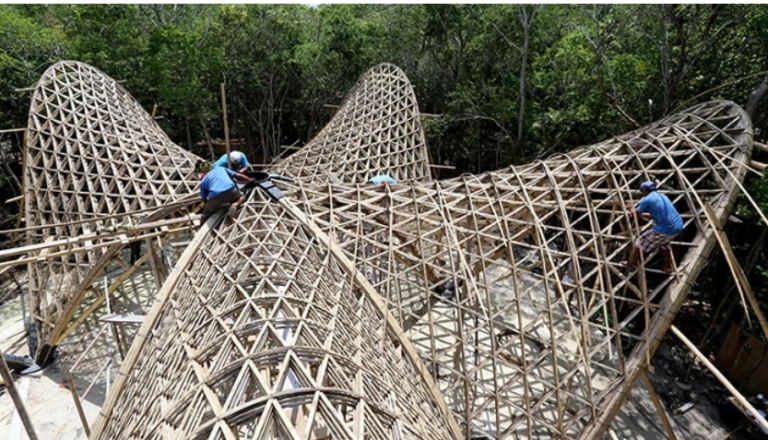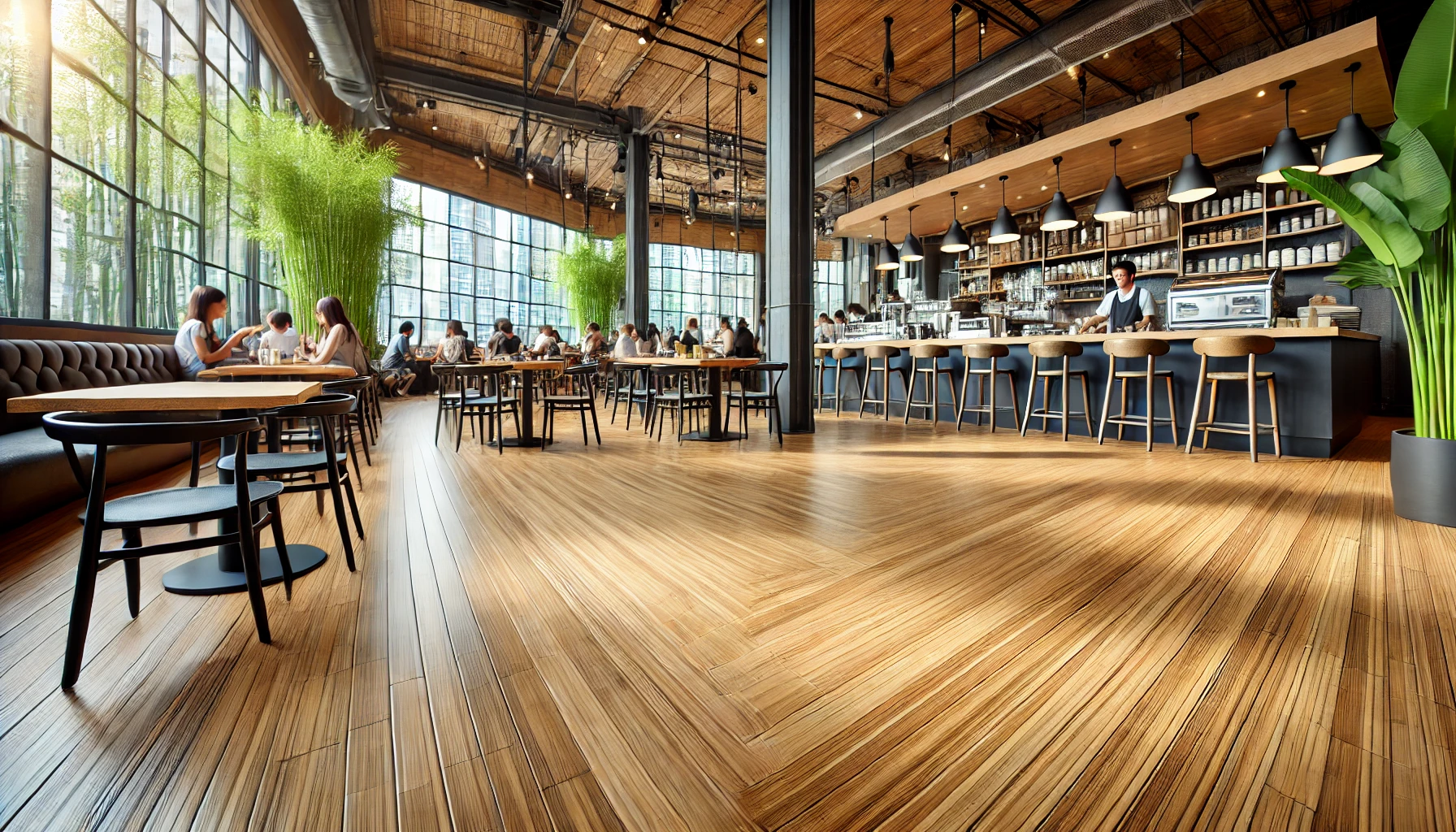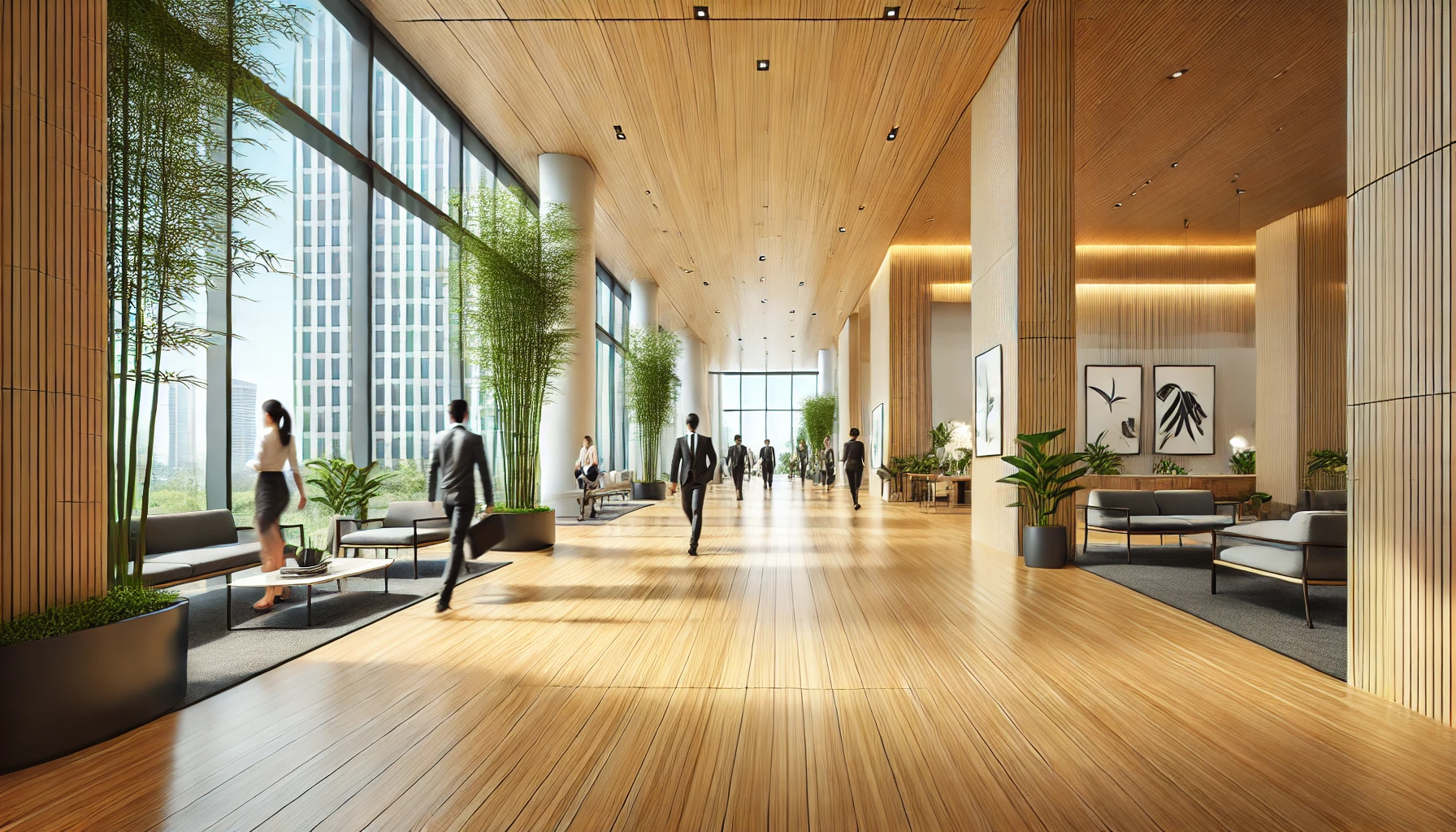Sustainability is no longer just a buzzword; it has become a critical consideration in modern construction and design. As we strive to create buildings that are not only functional but also environmentally friendly, the materials we choose play a pivotal role. Among the myriad options available, laminated bamboo lumber stands out as a versatile, durable, and eco-friendly alternative to traditional building materials. This remarkable material is not only sustainable but also offers a host of benefits that make it ideal for high-traffic areas.
In this blog post, we will explore the many advantages of using laminated bamboo lumber in high-traffic areas. We’ll delve into what makes this material so special, comparing it to traditional building materials in terms of durability, strength, and aesthetic appeal. We’ll also examine its environmental impact, cost-effectiveness, and the ease of installation and maintenance.
By the end of this post, you’ll have a comprehensive understanding of why laminated bamboo lumber is an excellent choice for your next construction project.
Understanding Laminated Bamboo Lumber
Definition and Composition
Laminated bamboo lumber is a type of engineered wood product made from bamboo strips that are glued together under high pressure. The process involves cutting mature bamboo poles into thin strips, treating them to remove moisture and insects, and then laminating the strips in layers. This creates a dense, strong material that can be used similarly to traditional lumber.
Sustainability Aspect
Bamboo is considered one of the most sustainable materials available due to its rapid growth rate. Unlike trees that can take decades to mature, bamboo can be harvested in as little as three to five years. Additionally, bamboo forests regenerate without the need for replanting, making it a highly renewable resource. Compared to traditional wood and other materials, bamboo’s environmental footprint is significantly smaller, making it a preferred choice for eco-conscious builders.
Durability and Strength
Comparison with Traditional Materials
When it comes to durability and strength, laminated bamboo lumber holds its own against traditional hardwoods like oak and maple. Bamboo's natural tensile strength is comparable to steel, and when laminated, it becomes even stronger and more resilient.
Technical Specifications
Laminated bamboo lumber boasts impressive hardness ratings, often exceeding those of many traditional hardwoods. It has a high tensile strength and excellent load-bearing capacity, making it suitable for floors, beams, and other structural applications in high-traffic areas.
Real-world Applications
Many commercial spaces, schools, and public buildings have successfully used laminated bamboo lumber in high-traffic areas. For example, some retail stores use bamboo flooring due to its durability and ability to withstand heavy foot traffic. Educational institutions appreciate its resilience and low maintenance requirements.
Aesthetic Appeal
Natural Beauty of Bamboo

One of the most appealing aspects of bamboo is its natural beauty. Laminated bamboo lumber features unique grain patterns and a warm, inviting color that can enhance the aesthetic of any space.
Customization Options

Laminated bamboo lumber is available in various styles, colors, and textures. This versatility allows designers to achieve the desired look, whether they prefer a traditional, rustic appearance or a sleek, modern finish.
Environmental Impact
Renewability of Bamboo
Bamboo's renewability is one of its most significant advantages. It grows quickly and can be harvested without causing permanent damage to the ecosystem. In comparison, traditional timber requires decades to mature and can lead to deforestation if not managed sustainably.
Carbon Footprint
The carbon footprint of producing laminated bamboo lumber is lower than that of traditional hardwoods. Bamboo absorbs more carbon dioxide and produces more oxygen than an equivalent stand of trees, contributing positively to the environment.
LEED Certification and Green Building Standards
Using bamboo can help builders achieve LEED certification and meet other green building standards. Its sustainable nature and low environmental impact make it an excellent choice for projects aiming for high sustainability ratings.
Cost-Effectiveness
Initial Costs vs. Long-term Savings
While the initial cost of laminated bamboo lumber can be comparable to high-quality hardwoods, its long-term savings are substantial. Bamboo's durability and low maintenance requirements reduce the need for frequent replacements and repairs.
Economic Benefits
While the initial cost of laminated bamboo lumber can be comparable to high-quality hardwoods, its long-term savings are substantial. Bamboo's durability and low maintenance requirements reduce the need for frequent replacements and repairs.
Comparative Analysis
When comparing costs, bamboo often comes out ahead due to its longevity and minimal maintenance needs. Traditional hardwoods and other high-quality materials may require more upkeep and have shorter lifespans, leading to higher overall costs.
Installation and Maintenance
Ease of Installation
Laminated bamboo lumber is relatively easy to install. It can be cut, sanded, and finished using standard woodworking tools. Additionally, its lightweight nature simplifies the installation process.
Maintenance Requirements
Maintaining bamboo is straightforward. Regular sweeping and occasional mopping with a damp cloth are usually sufficient to keep it looking new. Its resistance to dents and scratches further reduces maintenance efforts.
User Testimonials
Contractors and homeowners alike praise laminated bamboo lumber for its ease of installation and low maintenance. Testimonials often highlight its durability and aesthetic appeal, making it a preferred choice for various projects.
Health and Safety Benefits
Indoor Air Quality
Laminated bamboo lumber contributes to better indoor air quality due to its low VOC emissions. Unlike some traditional materials that can release harmful chemicals, bamboo is a safer, healthier choice for indoor environments.
Safety Standards
Bamboo is also known for its safety features, including fire resistance and slip resistance. These qualities are particularly important in high-traffic areas where safety is a priority.
Conclusion
In summary, laminated bamboo lumber is a versatile, durable, and eco-friendly material that offers numerous advantages for high-traffic areas. Its strength, aesthetic appeal, and environmental benefits make it a superior choice for modern construction projects. As sustainability continues to shape the future of building, bamboo stands out as a brilliant solution.
If you are considering using laminated bamboo lumber for your next project, we encourage you to explore the options offered by Coastal Custom Products. Our team is dedicated to providing high-quality, sustainable materials that meet your needs. Contact us today for more information or to request a quote.



